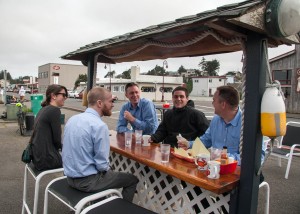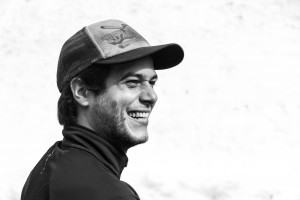By Tarik Rawlings
The Oregon coast is a dynamic and ever changing landscape. Shaped by a range of natural forces – wind, ocean, rivers, and earthquakes – this region is subject to a variety of natural hazards. Floods, landslides and coastal erosion occurs on an annual basis. Much less frequently, large earthquakes and tsunamis ravage the coast. What can coastal communities do to increase their resilience in the dynamic and changing nature of these threats?

Most current disaster mitigation efforts work to prevent negative impacts. An important, emerging concept in disaster planning is the idea of “recovery” or “resilience” of communities, post-disaster. The threat of the Cascadia Subduction Zone has justified a closer look at the Pacific Northwest’s coastal communities. In order to maintain the vitality and character of these communities, the concepts of recovery and resilience must be included in comprehensive planning documents.
As part of the Community Planning Workshop (CPW), our team is involved in the South Coast Socio-Economic Resilience and Recovery Project. This project covers the Southern Oregon Coast and will work closely with the coastal communities of Brookings, Bandon, Reedsport and Florence. Funding for this project was secured by the Community Service Center in partnership with The Ford Family Foundation’s Institute for Community Building through a grant from the National Oceanic Atmospheric Association (NOAA). The purpose of this project is to enhance recovery and resilience efforts in coastal Oregon communities by tapping into existing local and regional networks.
Aside from our group’s unanimous affection for the Oregon Coast, team members, Ollie Gaskell, Kyle Collins, Kendal Black and myself have banded together through a common passion for geography, resource management, road trips and natural hazard mitigation. Our goal is to work with these communities to better understand their assets, resources, locations, disaster preparation measures and recovery strategies. Under the guidance of Project Manager, Dana Nichols and Project Advisor, Josh Bruce, our group will ultimately create (1) a Local Recovery Planning Guide, (2) community-specific Policy Review and Recommendation Reports, and (3) a five-year strategic plan that will guide additional recovery and resilience planning work along the southern Oregon Coast.
Our group has utilized these first weeks of CPW to gain local knowledge along the Southern Coast and work to understand the social and economic struggles and successes within each community. Currently, project work includes research of social and economic recovery and resilience practices. We intend to gather local input from each community to determine their most valuable assets, which will we will use to inform the recovery priorities for each community. In order to provide a helpful service, our group aims to understand local contexts and abilities before drafting our recommendations. To do this, we are first reaching out to project partners and local community champions. Most recently, the team called Kris Wall, Coastal Management Specialist with NOAA, to learn more about the project goals and objectives. Next, we hope to begin introductions with our local community networks and other regional partners.
The NOAA South Coast Socio-Economic Resilience and Recovery Project provides the Oregon coastal region with functional recommendations in support of continued, local well-being. Our research and deliverables will serve as resources for a wide audience so that communities may better prepare and recover from natural hazards. Our team and supervisors are diligent and we greatly look forward to the next steps of this important project.
Tarik Rawlings

